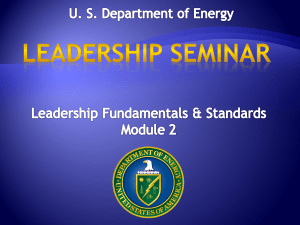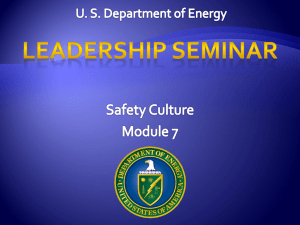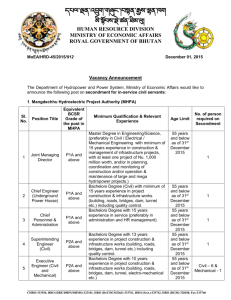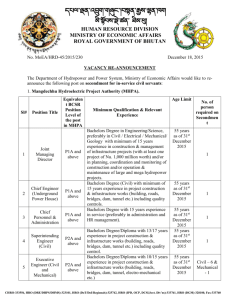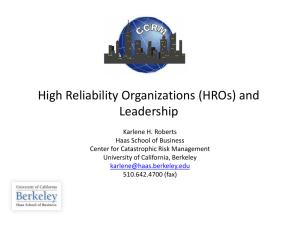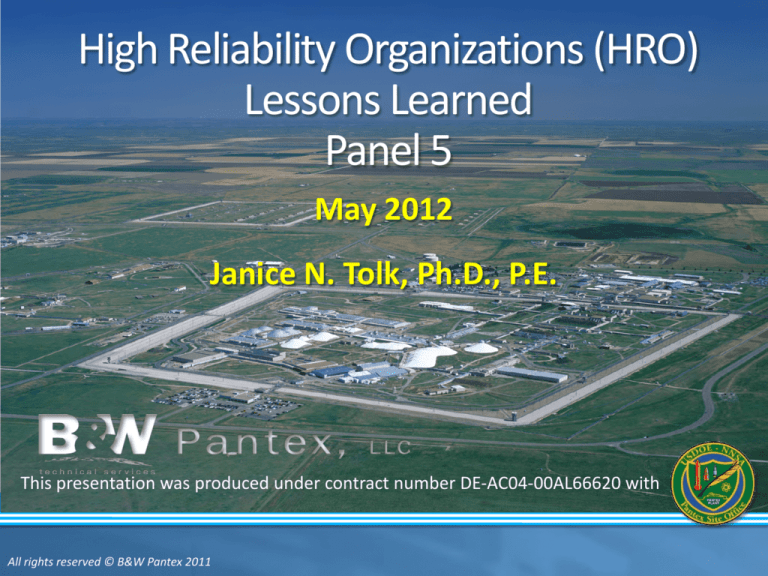
High Reliability Organizations (HRO)
Lessons Learned
Panel 5
May 2012
Janice N. Tolk, Ph.D., P.E.
This presentation was produced under contract number DE-AC04-00AL66620 with
All rights reserved © B&W Pantex 2011
Accomplishments
Initial HRO & CFA training to senior staff
Designed Causal Factors Analysis (CFA) process
Developed Break-the-Chain Framework
Started to understand need for systems approach to HRO
Strengths
General Manager Strong HRO Champion
Performed 5 CFAs – improved tool through practice
Leveraged strong processes
Well designed safety basis
Configuration management system
Strict procedure adherence
Safety programs established
Areas of Improvement
CFA was our only investigative tool
Tactical vs. strategic approach
Didn’t fully appreciate challenges of organizational culture
All rights reserved © B&W Pantex 2011
2
Accomplishments
Connected Deming Theory of Profound Knowledge to HRO to
Ensure System Approach
Plant operations complex and inter-related systems
Published HRO & CFA Books
Strengths
Solidified understanding of HRO for practitioners
Performed 3 CFAs
Learned CFA not the best tool for process problems – best for single events
Designed process for organizational transformation to HRO
Areas of Improvement
Tactical vs. strategic approach
Necessary HRO gap analysis not performed
All rights reserved © B&W Pantex 2011
3
Accomplishments
Refocused from HRO = CFA to HRO as master of systems
Developed concept of pinnacle and plateau events
Held joint workshop with PXSO senior management
Strengths
Collaboration with PXSO
Proved to be staunch supporter
Performed 2 CFAs
Areas of Improvement
Tactical vs. strategic approach
Did not perform gap analysis
Lost momentum with change in management
All rights reserved © B&W Pantex 2011
4
Accomplishments
Developed barrier analysis tool
Piloted safety culture survey
Began collaboration with Texas Tech University
Strengths
Performed 2 barrier analysis to refine the tools
Piloted safety culture survey in operations group
Defined pinnacle and plateau event for each work group
HRO became Plant strategic objective
Joint CFA with B&W Pantex, PXSO, and U.S. National Laboratory
Areas of Improvement
Tactical vs. strategic approach
Did not perform gap analysis
All rights reserved © B&W Pantex 2011
5
Accomplishments
Published multi-year HRO Strategic Plan and Implementation Plan
Documented additional tools
Barrier Analysis
Plateau and Pinnacle Event definitions
HRO terminology guide
Began Safety Culture Survey for balance of plant
Action plan for pilot safety culture survey results
Strengths
Continued strong collaboration with PXSO
Personal Reliability Campaign
Performed 2 CFAs and 1 in-depth barrier analysis
Selected HRO Ambassadors for each operational area
Started gap analysis
Deferred due to contract re-competition
Areas of Improvement
Confusion over appropriate tool usage
All rights reserved © B&W Pantex 2011
6
What we have learned
Have a strong senior management champion
Take a strategic approach
Define what HRO means to your industry
Perform gap analysis (including safety culture survey)
Develop 5-year plan
HRO is more than the application of tools
Operating paradigm
Train all employees at all levels and involve them
using the tools
All rights reserved © B&W Pantex 2011
7
What we have learned (continued)
Involve customers, regulators, etc.
Practice makes perfect – use the tools often
Learn by doing
Learn about your systems
A well documented safety basis or program doesn’t
mean you can’t have problems
Share your experience with others
All rights reserved © B&W Pantex 2011
8
What we have learned (continued)
Embed organizational culture into the tools and
training early in the journey
Safety, Security, Quality
Metrics for HRO success are extremely difficult to
derive
Performing a gap analysis and a SWOT analysis
makes strategic planning much easier
Assessing safety culture is not as easy as it sounds!
All rights reserved © B&W Pantex 2011
9

